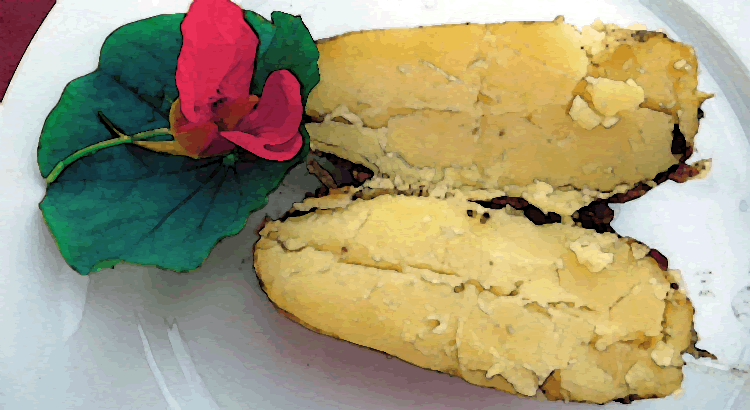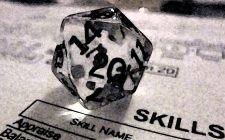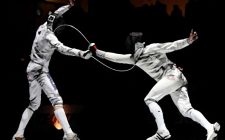In D&D 4e, the developers categorized classes in terms of combat role (controller, defender, leader, and striker) and power source (arcane, divine, martial, primal, and psionic). The compulsive taxonomer in me really loved (with floaty hearts) the idea of what they were trying to do. Or at least my guesses about what they were trying to do. But I felt like the execution was a bit of a let down. So, as I mentioned in Yes, I hombrewed 4e, one of my goals in homebrewing my new system was to take that idea of power sources and really do it justice.
Now, here’s some advice from someone who’s been there and back. If you’re going to do a serious overhaul of a game system, be clear on what you’re trying to do. Know what you like, know what you don’t like, and really take the time to understand how the game system works before you start changing it. And it helps if you approach it as being a series of smaller projects and work on one area at a time. Otherwise it’s easy to get overwhelmed. You still have to revisit previously completed subprojects each time to check you didn’t break their balance with new material, but overall you’ll feel like you’re making progress more this way than if you try to do everything simultaneously.
So, with that in mind, let me take you through what I did with power sources.
What I liked
- The basic concept. Power sources give an in-game explanation for why people can cast spells and learn preternatural martial arts moves and cause death with their overwhelming charisma. It also formalizes the idea that some classes have similar sources and should therefore have access to shared features. For example, clerics and paladins may gain different powers, but they are both getting powers from their faith and devotion to their gods. And that’s a different kind of power than the sort of thing you can get by studying arcane texts or studying to wave your sword. Sounds legit.
- Distributing flavor among combat roles. Power sources lets players choose whether they want their characters to have a flavor (devoted follower of the gods, weapons-master, magic user, psychic, etc.) without limiting their choice of combat role.
- Divine power source. The idea of choosing domains is fun, and it adds a lot of customization to each class. I also liked the in-character idea of channeling divine energy. Now, I think they have WAY TOO MANY choices, but the set up is solid.
What I didn’t like
- Imperfect Distribution. The distribution of classes among the sources was so close to even that it only highlighted for me how it wasn’t perfectly well-distributed. Some power sources had extra classes in a role, like the arcane source with two leaders (artificer and bard), martial with two strikers (ranger and rogue), and primal with two controllers (druid and seeker). And, okay, I have to admit. None of this makes the system unbalanced or intrinsically weak, but it killed me that there was no martial controller. And that’s just wrong. My blood pressure rises just thinking about it again.
- Weak Follow-through. The idea of a power source is that it literally explains the source of a class’s power, and those with the same source have characteristics shared with other classes of the same source. And they sort of followed through with this idea, but man, the execution was rough. For example, they have five divine classes. Cleric, Paladin, Invoker, Avenger, and Runepriest. Four of the five can channel divinity and get divine domains and get some variation of Turn Undead. And the Runepriest gets…the word priest in its name and absolutely nothing else to tie it to the other four. Likewise, there are four psionic classes. Three of them feature the psionic augmentation and power point system, and they get their own advancement table. And the fourth, the monk, has nothing to do with any of it. It just gets vague flavor text about chi. Blech. And some of the power sources have a huge range of feats and paragon paths and stuff, and some have very little. It’s like they assigned it to different people, and some were sold on the concept and while others thought it was a waste of time and energy.
- Vague In-Character Explanations. If they’re going to posit the existence of power sources, I want the sources to explain how the classes get their powers and for those explanations to make sense. What I wanted was a unified field theory for power, but all I was getting was a couple randomly selected corollaries. For example, primal characters get powers from nature spirits, but they don’t explain how would be different the warlock getting power from pacts with a vestiges of a nature god. Divine power made sense (except for the Runepriest, damnit) because it’s granted by the gods. But they didn’t really explain the difference between, say a sorcerer being born with arcane magic power and an ardent being born with psionic magic power, other than calling one “arcane” and the other “psionic”. The mechanics were different, but I wanted some in-game description of the difference. And martial powers as a source didn’t make sense. What was the difference between a rogue using a rapier to stab someone and a bard using a rapier to stab someone. Or a ranger swinging a big axe and a barbarian swinging a big axe. With their explanation, it seems like any weapon wielder would get their own power source, plus also some of the martial. You can’t see it through the screen, but I’m totally making an “I smell a fart” face.
Organize the classes
Math-wise, 24 classes were never going to be distributed evenly among the five power sources. I either had to change the number of classes or change the number of power sources. I wasn’t completely sure which way I wanted to go, so I started by taking the 24 classes and sorting them into a table. I put power source along one axis and roles along the other. I tried to keep what I could of the original 4e ideas so that I wasn’t completely starting from scratch, but I was just playing around at this stage, so I was completely willing to move things around to try to get a sense for what made me happy.
I wanted the classes to
- be perfectly distributed among the roles and powers sources
- have a strong thematic connection to their power source
- have a flavor niche that was clearly different than the others from that power source
- have a tactical niche that was clearly different than the others in that role
I experimented with breaking down the roles differently, so that there 5 instead of four, but decided against it in the end. I also considered leaving out a bunch of classes, because 24 is really more than anybody needs. That would have been the sensible thing to do.
I couldn’t bring myself to do it.
But that means I had 24 classes among four roles, which means I had to develop six power sources.
For a while I thought about Shadow as a sixth source (necromancer, witch, assassin, and spy, maybe?), but in the end decided on Intrinsic, which was a less cool name than “Shadow”, but I had more ideas in terms of fun things to do with it, and it was a better fit for the classes that I wanted to move, which were more about skills, talent, and inspiration.
I revised some of the classes a bit to make them work, and in the end came up with this:
| Source | Controller | Defender | Leader | Striker |
|---|---|---|---|---|
| Arcane | Wizard | Magesmith (swordmage) | Runewitch (runepriest) | Sorcerer (warlock) |
| Divine | Saint (invoker) | Paladin | Cleric | Inquisitor (avenger) |
| Intrinsic | Alchemist (seeker) | Artificer | Bard | Rogue |
| Martial | Martial Artist (monk) | Guard (fighter) | Captain (warlord) | Ranger |
| Primal | Druid | Warden | Shaman | Barbarian |
| Psionic | Dreamwalker (psion) | Kinetic (battlemind) | Empath (ardent) | Elementalist (sorcerer) |
Conceptualize the Power Sources
So my next step was to really think through what the power sources were and how they worked.
I had played an Iron Kingdoms campaign not too long before, and part of the character creation process is to choose one of four archetypes (Gifted, Intellectual, Mighty, and Skilled). I tried to emulate that combination of a few streamlined choices that opens up options throughout your career and provide clear flavor that is separate from, yet overlays, your class choices.
So, I knew I had six power sources to fill out, and names and vague concepts for each.
My next step was to figure out how I was going to balance everything in the game. Here, I did something drastic. I committed genocide.
Not really, of course, but I did eliminate all races as player options, which causes some people to act as if I had committed genocide.
I did this for a few reasons. First, in 4e, your race defines which are your best stats and your stats define which classes you’re good at. So in practice, it really yokes the class and race choice together. Race seemed like such a roleplaying choice to me, but in practice it seemed like everyone always wanted to choose based on stat reasons, which just ruined it. Plus, having exotic races makes humans seem boring in comparison. Maybe mechanically powerful, but boring. When everyone’s a human, but there are a variety of well-developed nations and ethnicities, then the choice becomes RP-based again.
Second, in removing race, I left a hole in the system that I could fill with power sources without re-balancing the whole system. And in remove all the features and feats and powers and everything from the races, I created a pile of pre-made material to mix-and-match into power sources.
Third, removing races allowed me to reset player expectations. This doesn’t really have anything to do with power sources, but it filled a separate need. See, if you start off with elves and dwarves and dragonborn and genasi and so on, your players expect that somewhere in your world are all the other monsters in the monster manual. So an encounter with typical low-level monsters can feel a little underwhelming. Fun, maybe, but not “holy crap, what is that!” magical. But if the players only know of humans and natural beasts, and a few, very specific types of magic, then encounters with unusual creatures or environments can feel more magical and heroic in comparison. And when we get to truly legendary, magical creatures, they feel legendary and magical, not expected and predictable. It’s like Buddy Pines says in the Incredibles, “And with everyone super, no one will be. ” So if I make everyone start more mundane, the magical adventure they go one feels like they’re falling down the rabbit hole. That’s my theory, anyway.
Anyway, next post will get into all the details as I unveil the divine power source. Woo hoo!




[…] the last post, Power Sources I: Polishing a Half-baked Idea, I described my general approach to creating a power system as part of making a D&D 4e […]
This is awesome. Thank you for going through this.